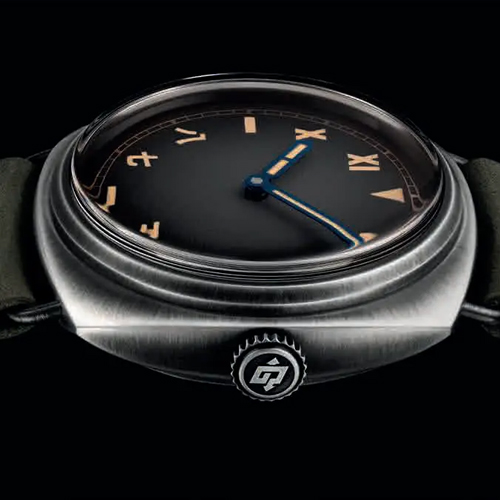不同血液净化方法对维持性血液透析患者血清蛋白结合类尿毒症毒素
史媛媛 丁峰
摘 要 越来越多的研究表明,蛋白结合类尿毒症毒素在尿毒症并发症的发生、发展中起着重要作用,且这些毒素血浓度的升高与终末期肾脏病患者的不良预后密切相关,而大多数血液净化模式对它们的清除效果均较差。近年来,随着相关研究的不断深入,对蛋白结合类尿毒症毒素的血液净化清除有了许多新的思路。本文根据血液净化清除机制(弥散、对流和吸附),就蛋白结合类尿毒症毒素的血液净化清除研究进展作一概要介绍。
关键词 蛋白结合类尿毒症毒素 慢性肾脏病 血液净化
中图分类号:R692.5; R459.5 文献标志码:A 文章编号:1006-1533(2018)09-0012-05
Research progress of blood purification for the removal of protein-bound uraemic toxins*
SHI Yuanyuan, DING Feng**(Division of Nephrology, Shanghai Ninth Peoples Hospital, School of Medicine, Shanghai Jiao Tong University, Shanghai 200011, China)
ABSTRACT Accumulating evidence suggested that protein-bound uraemic toxins (PBUTs) played an important role in the occurrence and development of uraemic complications, and the increase of concentration of these toxins in serum was closely associated with the poor prognosis of patients with end-stage renal disease. However, current extracorporeal dialysis therapies can not efficiently remove the PBUTs. In recent years, many new ideas have been proposed for the treatment of blood purification with the continuous study on eliminating these PBUTs. The advances in blood purification for removing these toxins are briefly introduced according to the principle of blood purification (diffusion, convection and adsorption).
KEy WORDS protein-bound uraemic toxins; chronic kidney disease; blood purification
尿毒症毒素是指随着肾功能减退,在机体组织和血液中积累并导致尿毒症症状、细胞和组织器官结构损伤与功能失常、机体代谢紊乱的物质[1],通常可分为三类:①小分子水溶性溶质, 相对分子量<500 Da,如尿素、肌酐、尿酸等。此类毒素因分子量较小,可被常规血液透析有效清除。②中大分子毒素,相对分子量≥500 Da,如β2-微球蛋白、瘦素、甲状旁腺激素等。此类毒素因分子量较大,只能被孔径较大的透析膜所清除。③蛋白结合类毒素,以3-羧基-4-甲基-5-丙基-2-呋喃丙酸(3-carboxy-4-methyl-5-propyl-2-furanpropionic acid, CMPF)、硫酸对甲酚(p-cresyl sulphate)、硫酸吲哚酚(indoxyl sulphate)、吲哚-3-乙酸(indole-3-acetic acid, IAA)、马尿酸(hippuric acid)等为代表。此类毒素虽其本身的相对分子量一般<500 Da,但因可与血清白蛋白结合,形成被称为与蛋白结合的尿毒症毒素(proteinbound uremic toxins, PBUTs),大多数血液净化模式对其的清除效果均较差,每周的清除效率不及肾脏的1/10[2]。
大多数蛋白结合类尿毒症毒素(以下简称为“蛋白结合类毒素”)是肠源性毒素,由食物中的氨基酸经肠道内细菌作用生成[1]。正常情况下,蛋白结合类毒素可为肾脏近端小管上皮细胞基底侧膜上的有机阴离子转运蛋白(organic anion transporters, OATs)摄入细胞,然后通过管腔侧膜上的多药耐药蛋白-4(multi-drug resistance protein-4, MDRP-4)和乳腺癌耐药蛋白(breast cancer resistance protein, BCRP)被分泌到肾小管腔,最后随尿液排泄出体外[3]。在肾功能受损患者中,机体肾小管上皮细胞中的OATs表达减少,但其他组织器官中的OATs仍可摄取蛋白结合类毒素,导致蛋白结合类毒素在體内蓄积[3-5]。有关研究表明,蛋白结合类毒素的游离、即未与蛋白结合形态是其造成机体组织毒性的主要因素[2]。慢性肾脏病患者随着肾功能减退,血清PBUTs浓度逐渐升高(至慢性肾脏病5期时达到最高),血清中的蛋白结合类毒素浓度也升高,进而损害机体各器官系统,如加速肾功能恶化和肾纤维化进展、提高心血管并发症发生率和加快心血管并发症发展、导致肾性骨病和尿毒症神经系统病变等[2]。大量研究证实,硫酸对甲酚和硫酸吲哚酚不仅会加速肾功能衰竭进展,而且与慢性肾脏病患者死亡的首要原因心血管事件的发生和发展密切相关[6]。尿毒症水平的硫酸对甲酚和硫酸吲哚酚可通过介导氧化应激、激活炎症反应途径、抑制抗衰老基因表达等机制严重损害肾脏和心血管等,是预测慢性肾脏病患者心血管并发症发生、发展的独立危险因子[6]。
近年来,随着对蛋白结合类毒素毒性研究的不断深入,进一步阐明了尿毒症及各种并发症发生、发展的机制,而如何有效清除血液透析患者血清中的蛋白结合类毒素也已成為目前血液净化领域的研究热点。本文根据血液净化清除机制(弥散、对流和吸附),就蛋白结合类毒素的血液净化清除研究进展作一概要介绍。
1 弥散
1.1 血液透析时间及其频率
Basile等[7]对11例维持性血液透析患者每隔1周序贯进行1次4 h(血流量和透析液流量均为350 ml/min)和1次8 h(血流量和透析液流量均为190 ml/min)的血液透析,2次血液透析的总血流量和总透析液流量一致,结果发现延长血液透析时间仅可提高小分子水溶性溶质和中大分子毒素的清除率,但不能提高蛋白结合类毒素的清除率,提示与血清白蛋白的结合显著影响了蛋白结合类毒素的清除动力学。Meijers等[8]研究发现,夜间长时血液透析对改善血清蛋白结合类毒素清除的作用较小,没有达到预期效果。但另有研究发现,在血流量和透析液流量相同的情况下,与4 h血液透析模式相比,8 h血液透析模式的血清硫酸吲哚酚浓度的下降率和透析液清除总量均显著更大[9]。一项研究比较了短时低通量血液透析(low-flux hemodialysis, LFHD。6×2 h/周)和标准LFHD(3×4 h/周)的蛋白结合类毒素清除效果,结果在随访6个月后发现,短时LFHD可更有效地降低患者的血清CMPF、硫酸对甲酚和硫酸吲哚酚浓度[10]。
1.2 透析膜的孔径
常用的LFHD的透析膜孔径较小,其主要通过弥散机制清除血液中的尿素、肌酐、尿酸等小分子水溶性溶质,对中大分子毒素的清除能力有限,这可能是标准LFHD患者的年死亡率高达10%以上的重要原因[11]。国内外研究均显示,常规血液透析仅能使硫酸对甲酚和硫酸吲哚酚这类高蛋白结合率(90% ~ 95%)毒素的血清浓度下降约30%,远远低于对小分子水溶性溶质的清除率(如可使尿素的血清浓度下降≥70%)[12-13]。高通量血液透析(high-flux hemodialysis, HFHD)要求透析器透析膜的超滤系数>20 ml/(h·mmHg),且透析膜的孔径也较大。但有关研究证实,HFHD对蛋白结合类毒素的清除效果与LFHD相当,仍较低,对硫酸对甲酚和硫酸吲哚酚的清除率分别只有29%和34%[14]。De Smet等[15]对11例维持性血液透析患者进行了3周的超高通量血液透析(super-flux hemodialysis, SFHD),结果发现与LFHD相比,SFHD[透析膜的超滤系数为66.9 ml/(h·mmHg)]对硫酸吲哚酚的清除率较高,但代价是1次血液透析即可使患者丢失3.4 g白蛋白,而这会加重患者的低白蛋白血症并提高其营养不良的发生危险。目前还不清楚最低使患者丢失多少白蛋白才会对其蛋白结合类毒素的清除有实质性帮助。
提高透析液流量和透析膜面积也是提高蛋白结合类毒素清除率的有效途径。一项研究发现,与常规血液透析相比,将2个透析器串联起来进行血液透析,在透析液流量设置显著高于血流量时,硫酸对甲酚和硫酸吲哚酚的清除率分别提高了66%和57%,提高的幅度甚至较尿素(提高25%)还高,提示弥散可能是清除蛋白结合类毒素的主要机制[16]。
1.3 提高蛋白结合类毒素的游离水平
蛋白结合类毒素在血液中多会以非共价键的形式与血清白蛋白的SudlowⅠ或Ⅱ位点可逆性结合,但这种结合受血液的温度、pH、稀释倍数及其内含的离子和药物浓度的影响。Yamamoto等[17]在体外实验中发现,血清中硫酸吲哚酚的游离水平随血液稀释倍数和pH的升高而升高。Tao等[18]在体外模拟血液透析,发现在加入布洛芬、呋塞米或色氨酸等可与蛋白结合类毒素竞争结合白蛋白的药物后,硫酸吲哚酚和IAA的清除率显著提高。另有研究发现,高渗前稀释血液透析滤过(hemodiafiltration, HDF)也可经由提高血液中蛋白结合类毒素的游离水平而提高部分蛋白结合类毒素的清除率[19-20]。此外,有研究发现,使用高溶氢透析液可促使硫酸吲哚酚自白蛋白结合位点解离,提高硫酸吲哚酚的游离水平,进而提高滤液中硫酸吲哚酚的清除效果[21]。
2 对流
增加对流可提高蛋白结合类毒素的清除率。Meert等[22]通过比较前稀释HDF(pre-dilution HDF, preHDF)、后稀释HDF(post-dilution HDF, post-HDF)与前稀释血液滤过(pre-dilution hemofiltration, pre-HF)的尿毒症毒素清除效果,发现pre-HDF对小分子水溶性溶质和蛋白结合类毒素的清除效果优于pre-HF,而post-HDF对小分子水溶性溶质和β2-微球蛋白的清除效果则优于pre-HDF,且对蛋白结合类毒素的清除效果与pre-HDF相当,故认为post-HDF是清除尿毒症毒素的最有效模式。此外,Meert等[23]研究还发现,经9周post-HDF后的血液透析患者的透析前血清硫酸对甲酚和CMPF浓度较经HFHD患者分别低27%和11%。但Krieter等[24]的研究并未得到与之一致的结论,他们发现post-HDF对蛋白结合类毒素的清除效果并未显著优于HFHD。
Meyer等[25]通过体外实验并建立数学模型后发现,连续性静脉-静脉血液滤过(continuous veno-venous hemofiltration, CVVH)的蛋白结合类毒素清除率等于超滤流量乘以血清蛋白结合类毒素的游离浓度,而连续性静脉-静脉血液透析滤过(continuous veno-venous hemodiafiltration, CVVHDF)的蛋白结合类毒素清除率等于超滤流量与透析液流量之和乘以血清蛋白结合类毒素的游离浓度。当透析液流量不是远远大于血流量时,与CVVH相比,CVVHDF的蛋白结合类毒素清除率的提高幅度取决于蛋白结合类毒素的游离水平;而当透析液流量远远大于血流量且透析膜面积足够大时,CVVHDF的蛋白结合类毒素清除率的提高幅度大于尿素和肌酐清除率的提高幅度。该研究结果提示,较之于对流机制的清除,弥散可能是清除血清蛋白结合类毒素的主要机制。
3 吸附
目前,国内外应用吸附机制清除蛋白结合类毒素的研究较少。血液灌流是最早用于临床清除蛋白结合类毒素的吸附模式,最常用于治疗尿毒症患者的吸附材料为活性炭和树脂。由于血液灌流本身并不能清除水分,也不能调节电解质和酸碱的平衡,故还常与常规血液透析联用。一项国内研究显示,血液灌流联合血液透析清除蛋白结合类毒素的效果优于HDF和血液透析[26]。另外一种清除蛋白结合类毒素的吸附模式是连续性血浆滤过吸附,即先使用血浆分离器分离出血浆,然后将其导入炭罐或树脂罐中进行吸附和净化处理,最后经静脉输回体内。Brettschneider等[27]应用血浆分离和吸附系统对维持性血液透析患者进行治疗,结果发现该系统清除蛋白结合类毒素的效果优于HFHD,但由于存在内瘘动脉血栓形成问题而无法用于临床。此外,有研究发现,在透析液中加入吸附剂活性炭可显著提高蛋白结合类毒素的清除率[28]。
最近开始逐渐被用于清除肝衰竭患者血液中蛋白结合类毒素的一种新型吸附系统是分子吸附再循环系统(molecular adsorbent recirculating system, MARS),后者系以白蛋白透析液循环利用的原理提高蛋白结合类毒素的清除效果,包括胆红素、胆汁酸和脂肪酸等。MARS通常含有3个循环,即血液循环、常规碳酸氢盐透析液循环和白蛋白透析液循环,其中白蛋白透析液的浓度多为20 ~ 40 g/L,容量为600 ml。在MARS中,白蛋白透析液先流经血液透析滤器吸附蛋白结合类毒素,然后再依次经过阴离子交换树脂和活性炭吸附得到净化,从而达到重复利用的目的。MARS一般可维持6 h。有研究发现,MARS清除胆红素、胆汁酸和色氨酸等蛋白结合类毒素的效果显著优于HDF[29]。不过,MARS的治疗成本较高,目前仅用于重症肝衰竭和肝移植过渡期患者的救治,尚未推广用于正在接受维持性血液透析的终末期肾脏病患者。目前还有研究者正在研发一种新型中空纤维膜,它分两层,内层为常规的高通量透析膜,外层则均匀涂布着活性炭颗粒,同时具有弥散性质和吸附功能。初步实验结果表明,这种新型中空纤维膜对硫酸对甲酚和硫酸吲哚酚的清除能力分别达380和367 mg/m2,显著高于常规高通量透析膜的225和187 mg/m2[30]。
4 腹膜透析
除血液透析外,腹膜透析也是一种主要的肾脏替代治疗途径。多项病例对照研究发现,血液透析的蛋白结合类毒素清除效果远优于腹膜透析[31-32],而与连续性非卧床腹膜透析相比,自动化腹膜透析在清除蛋白结合类毒素方面也无优势[33]。不过,研究也发现,虽然血液透析的蛋白结合类毒素清除率显著更高,但腹膜透析患者血清中的此类毒素浓度却低于血液透析患者[31-32],这可能与腹膜透析患者的残肾功能有关。一项研究检测了175例腹膜透析患者血清、尿液和废透析液中的硫酸对甲酚和硫酸吲哚酚浓度,结果发现硫酸对甲酚在尿液中的平均浓度是废透析液的8.5倍,硫酸吲哚酚在尿液中的平均浓度是废透析液的9.2倍,表明腹膜透析患者的残肾功能对蛋白结合类毒素的清除具有重要作用[34]。但当腹膜透析患者的残肾功能丧失后,尽管腹膜透析的蛋白结合类毒素清除率较低,但其血清蛋白结合类毒素浓度却不显著升高,原因尚不清楚[31-32,34-36]。
5 其他途径
大多数蛋白结合类毒素的前体均是膳食中蛋白质经肠道菌群作用产生的代谢产物,因此干扰肠道代谢有可能成为降低血清蛋白结合类毒素浓度的有效途径之一。有关研究发现,高纤维低蛋白饮食以及口服益生菌、抗性淀粉、低聚果糖等均可能具有有效降低慢性肾脏病患者血清蛋白结合类毒素浓度的作用[37-38]。一项研究显示,在血液透析前口服AST-120(一种活性炭吸附剂)可有效降低血清中的蛋白结合类毒素浓度,减缓肾小球滤过率的下降速率,延缓肾功能衰竭进程,并可推迟至需血液透析的时间[39],但能否改善患者的长期预后还待进一步的研究。
由于肾小管上皮细胞中的OATs、MDRP-4和BCRP在蛋白结合类毒素的吸收和分泌过程中起着重要作用,因此干預这些有机阴离子转运蛋白的表达及其功能也是降低血清蛋白结合类毒素浓度的一种策略。有研究发现,一些药物如丙磺舒和他汀类药物可降低血清中的蛋白结合类毒素浓度[40]。现还有研究者在研发一种能同时表达OATs、MDRP-4和BCRP的人工肾小管,使之同时具备主动摄取和分泌功能,初步实验结果表明这种人工肾小管可有效排泄硫酸吲哚酚[41],为蛋白结合类毒素的清除提供了新的思路。
6 结语
综上所述,到目前为止,有关各种血液净化模式对蛋白结合类毒素清除效果的研究结论尚不一致。探寻最佳的血液透析模式,以更有效地清除尿毒症毒素、特别是蛋白结合类毒素,这对减少血液透析患者的并发症、提高其生活质量和生存率极为重要,也是血液净化领域关注的重点。
参考文献
[1] Vanholder R, De Smet R, Glorieux G, et al. Review on uremic toxins: classification, concentration, and interindividual variability [J]. Kidney Int, 2003, 63(5): 1934-1943.
[2] Duranton F, Cohen G, De Smet R, et al. Normal and pathologic concentrations of uremic toxins [J]. J Am Soc Nephrol, 2012, 23(7): 1258-1270.
[3] Sirich TL, Aronov PA, Plummer NS, et al. Numerous proteinbound solutes are cleared by the kidney with high efficiency[J]. Kidney Int, 2013, 84(3): 585-590.
[4] Deguchi T, Ohtsuki S, Otagiri M, et al. Major role of organic anion transporter 3 in the transport of indoxyl sulfate in the kidney [J]. Kidney Int, 2002, 61(5): 1760-1768.
[5] Miyamoto Y, Watanabe H, Noguchi T, et al. Organic anion transporters play an important role in the uptake of p-cresyl sulfate, a uremic toxin, in the kidney [J]. Nephrol Dial Transplant, 2011, 26(8): 2498-2502.
[6] Vanholder R, Schepers E, Pletinck A, et al. The uremic toxicity of indoxyl sulfate and p-cresyl sulfate: a systematic review [J]. J Am Soc Nephrol, 2014, 25(9): 1897-1907.
[7] Basile C, Libutti P, Di Turo AL, et al. Removal of uraemic retention solutes in standard bicarbonate haemodialysis and long-hour slow-flow bicarbonate haemodialysis [J]. Nephrol Dial Transplant, 2011, 26(4): 1296-1303.
[8] Meijers B, Toussaint ND, Meyer T, et al. Reduction in protein-bound solutes unacceptable as marker of dialysis efficacy during alternate-night nocturnal hemodialysis [J]. Am J Nephrol, 2011, 34(3): 226-232.
[9] Cornelis T, Eloot S, Vanholder R, et al. Protein-bound uraemic toxins, dicarbonyl stress and advanced glycation end products in conventional and extended haemodialysis and haemodiafiltration [J]. Nephrol Dial Transplant, 2015, 30(8): 1395-1402.
[10] Fagugli RM, De Smet R, Buoncristiani U, et al. Behavior of non-protein-bound and protein-bound uremic solutes during daily hemodialysis [J]. Am J Kidney Dis, 2002, 40(2): 339-347.
[11] Tiranathanagul K, Yossundharaknl C, Techawathanawanna N, et al. Comparison of middle-molecule clearance between convective control double high-flux hemodiafiltration and online hemodiafiltration [J]. Int J Artif Organs, 2007, 30(12): 1090-1097.
[12] Niwa T. Removal of protein-bound uraemic toxins by haemodialysis [J]. Blood Purif, 2013, 35(Suppl 2): 20-25.
[13] 杜邱娜, 高嘉元, 朱銘力, 等. 心血管疾病相关蛋白结合毒素在高通量血液透析中的清除[J]. 中华肾脏病杂志, 2012, 28(1): 25-30.
[14] Lesaffer G, De Smet R, Lameire N, et al. Intradialytic removal of protein-bound uraemic toxins: role of solute characteristics and of dialyser membrane [J]. Nephrol Dial Transplant, 2000, 15(1): 50-57.
[15] De Smet R, Dhondt A, Eloot S, et al. Effect of the super-flux cellulose triacetate dialyser membrane on the removal of nonprotein-bound and protein-bound uraemic solutes [J]. Nephrol Dial Transplant, 2007, 22(7): 2006-2012.
[16] Luo FJ, Patel KP, Marquez IO, et al. Effect of increasing dialyzer mass transfer area coefficient and dialysate flow on clearance of protein-bound solutes: a pilot crossover trial [J]. Am J Kidney Dis, 2009, 53(6): 1042-1049.
[17] Yamamoto K, Eguchi K, Kaneko I, et al. In vitro study of removal of protein-bound toxins [J]. Blood Purif, 2013, 35(Suppl 1): 51-54.
[18] Tao X, Thijssen S, Kotanko P, et al. Improved dialytic removal of protein-bound uraemic toxins with use of albumin binding competitors: an in vitro human whole blood study [J/ OL]. Sci Rep, 2016, 6: 23389 [2018-02-13]. doi: 10.1038/ srep23389.
[19] B?hringer F, Jankowski V, Gajjala PR, et al. Release of uremic retention solutes from protein binding by hypertonic predilution hemodiafiltration [J]. ASAIO J, 2015, 61(1): 55-60.
[20] Krieter DH, Devine E, K?rner T, et al. Haemodiafiltration at increased plasma ionic strength for improved protein-bound toxin removal [J]. Acta Physiol (Oxf), 2017, 219(2): 510-520.
[21] Tange Y, Takesawa S, Yoshitake S. Dialysate with high dissolved hydrogen facilitates dissociation of indoxyl sulfate from albumin [J/OL]. Nephrourol Mon, 2015, 7(2): e26847[2018-02-13]. doi: 10.5812/numonthly.26847.
[22] Meert N, Eloot S, Waterloos M, et al. Effective removal of protein-bound uraemic solutes by different convective strategies: a prospective trial [J]. Nephrol Dial Transplant, 2009, 24(2): 562-570.
[23] Meert N, Waterloos MA, Van Landschoot M, et al. Prospective evaluation of the change of predialysis proteinbound uremic solute concentration with postdilution online hemodiafiltration [J]. Artif Organs, 2010, 34(7): 580-585.
[24] Krieter DH, Hackl A, Rodriguez A, et al. Protein-bound uraemic toxin removal in haemodialysis and post-dilution haemodiafiltration [J]. Nephrol Dial Transplant, 2010, 25(1): 212-218.
[25] Meyer TW, Walther JL, Pagtalunan ME, et al. The clearance of protein-bound solutes by hemofiltration and hemodiafiltration [J]. Kidney Int, 2005, 68(2): 867-877.
[26] 鄧岱, 李新伦, 李红霞, 等. 不同血液净化方法清除维持性血液透析患者血清蛋白结合类尿毒症毒素的效果比较[J]. 中国血液净化, 2014, 13(9): 639-642.
[27] Brettschneider F, T?lle M, von der Giet M, et al. Removal of protein-bound, hydrophobic uremic toxins by a combined fractionated plasma separation and adsorption technique [J]. Artif Organs, 2013, 37(4): 409-416.
[28] Meyer TW, Peattie JW, Miller JD, et al. Increasing the clearance of protein-bound solutes by addition of a sorbent to the dialysate [J]. J Am Soc Nephrol, 2007, 18(3): 868-874.
[29] Mitzner S, Stange J, Klammt S, et al. Extracorporeal detoxification using the molecular adsorbent recirculating system for critically ill patients with liver failure [J]. J Am Soc Nephrol, 2001, 12(Suppl 17): S75-S82.
[30] Pavlenko D, van Geffen E, van Steenbergen MJ, et al. New low-flux mixed matrix membranes that offer superior removal of protein-bound toxins from human plasma [J/OL]. Sci Rep, 2016, 6: 34429 [2018-02-13]. doi: 10.1038/srep34429.
[31] Evenepoel P, Bammens B, Verbeke K, et al. Superior dialytic clearance of β2-microglobulin and p-cresol by high-flux hemodialysis as compared to peritoneal dialysis [J]. Kidney Int, 2006, 70(4): 794-799.
[32] Pham NM, Recht NS, Hostetter TH, et al. Removal of the protein-bound solutes indican and p-cresol sulfate by peritoneal dialysis [J]. Clin J Am Soc Nephrol, 2008, 3(1): 85-90.
[33] Eloot S, Vanholder R, Dequidt C, et al. Removal of different classes of uremic toxins in APD vs CAPD: a randomized cross-over study [J]. Perit Dial Int, 2015, 35(4): 436-442.
[34] Huang WH, Hung CC, Yang CW, et al. High correlation between clearance of renal protein-bound uremic toxins(indoxyl sulfate and p-cresyl sulfate) and renal water-soluble toxins in peritoneal dialysis patients [J]. Ther Apher Dial, 2012, 16(4): 361-367.
[35] Lee CT, Kuo CC, Chen YM, et al. Factors associated with blood concentrations of indoxyl sulfate and p-cresol in patients undergoing peritoneal dialysis [J]. Perit Dial Int, 2010, 30(4): 456-463.
[36] Viaene L, Meijers BK, Bammens B, et al. Serum concentrations of p-cresyl sulfate and indoxyl sulfate, but not inflammatory markers, increase in incident peritoneal dialysis patients in parallel with loss of residual renal function [J]. Perit Dial Int, 2014, 34(1): 71-78.
[37] Patel KP, Luo FJ, Plummer NS, et al. The production of p-cresyl sulfate and indoxyl sulfate in vegetarians versus omnivores [J]. Clin J Am Soc Nephrol, 2012, 7(6): 982-988.
[38] Rossi M, Klein K, Johnson DW, et al. Pre-, pro-, and synbiotics: do they have a role in reducing uremic toxins? A systematic review and meta-analysis [J/OL]. Int J Nephrol, 2012, 2012: 673631 [2018-02-13]. doi: 10.1155/2012/673631.
[39] Maeda K, Hamada C, Hayashi T, et al. Long-term effects of the oral adsorbent, AST-120, in patients with chronic renal failure [J]. J Int Med Res, 2009, 37(1): 205-213.
[40] Liu S, Wang BH, Kompa AR, et al. Antagonists of organic anion transporters 1 and 3 ameliorate adverse cardiac remodelling induced by uremic toxin indoxyl sulfate [J]. Int J Cardiol, 2012, 158(3): 457-458.
[41] Jansen J, Fedecostante M, Wilmer MJ, et al. Bioengineered kidney tubules efficiently excrete uremic toxins [J/OL]. Sci Rep, 2016, 6: 26715 [2018-02-13]. doi: 10.1038/srep26715.
















